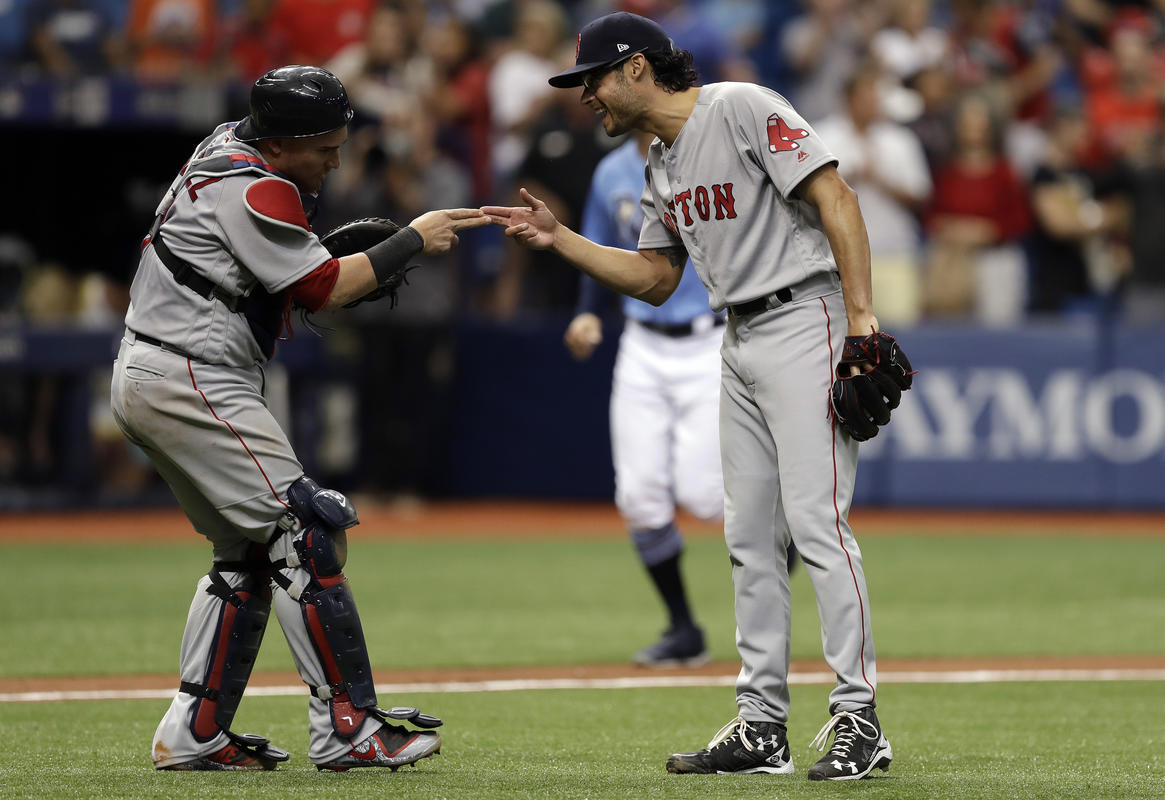In January of 2015, five and a half months after the Red Sox acquired him from the Cardinals in a deadline day trade, Joe Kelly predicted he would win the AL Cy Young Award. A lot has happened since then, including 31 mostly mediocre starts across his first two full seasons in a Red Sox uniform, a demotion to the bullpen, a change in hairstyle, a foray into on-field reporting, and becoming Public Enemy No. 1 in New York. There’s also this: Kelly has become the most reliable arm (outside of Craig Kimbrel) in Alex Cora‘s bullpen arsenal.
This didn’t happen overnight. Kelly’s evolution from failed starter to quality set-up man has taken time; time that has yielded one of the more unique (and seemingly contradictory) pitch mixes in the majors. Per Brooks Baseball, Kelly’s fourseam fastball “generates an extreme number of groundballs” when compared to other RHP’s. His sinker “is an extreme flyball pitch compared to other pitchers’ sinkers”. His two main offspeed pitches (slider and changeup) have generated a ton of flyballs too. Despite this, Kelly’s groundball rate is as low as it’s been since 2016. Red Sox fans probably won’t remember Joe’s performance that year too fondly. He posted a 5.18 ERA and allowed home runs on a career-worst 17.9% of flyballs.
So what changed? First, and perhaps most importantly, Kelly has figured out how to make his blazing fourseamer wiggle a bit. His average velocity in 2017 (99.29 mph) and 2018 (98.53 mph) on that pitch is up from 2015 (97.13 mph) and 2016 (97.28 mph). Moving to the bullpen makes that an expected result. However, that has also coincided with an increase in vertical movement. Kelly’s “hard” classified pitches have had a differential movement of 9.16 this season, up from 7.17 in 2015 or 7.64 in 2016. As a result, batters are hitting Kelly with less authority than ever before. Per FanGraph’s data, 32.9% of batted balls against Kelly have been classified as “soft”, a vast improvement over his previous career high of 19.2%.
Kelly has also regained command of the strike zone. He posted a 10.4 K-BB% in 2015, and walked 5.4 batters per nine innings in 2016. He’s only walked 3.90 batters per nine innings this season. Additionally, his 15.5 K-BB% stands as a career best. It’s a simple formula, but not one every pitcher is able to crack. Fortunately for Kelly, he has had the talent and the perseverance to figure it out.
Kelly entered the game on Monday night in a tough spot. The score was knotted at zero in the bottom of the seventh with the bases juiced, and one of Baltimore’s best players at the plate. The righthander did what you’d expect from any top-notch setup man– he struck out Adam Jones on five pitches to end the inning. Cora dropped him into an almost identical situation on Tuesday night, and again Kelly delivered. This time, he got Jonathan Schoop to weakly tap into a 1-2 force out with the bases loaded. It was a two-game stretch that stood in stark contrast to prior seasons. It also stood in stark contrast to Joe’s first outing of the year, when he allowed a double and three walks in 0.1 innings of work.
At any rate, Kelly’s high-level performance and dramatic improvement may not win him a Cy Young award any time soon. However, he’s remade himself into one of the most clutch players on this Red Sox roster. He might just end up with even more meaningful hardware as a result.
